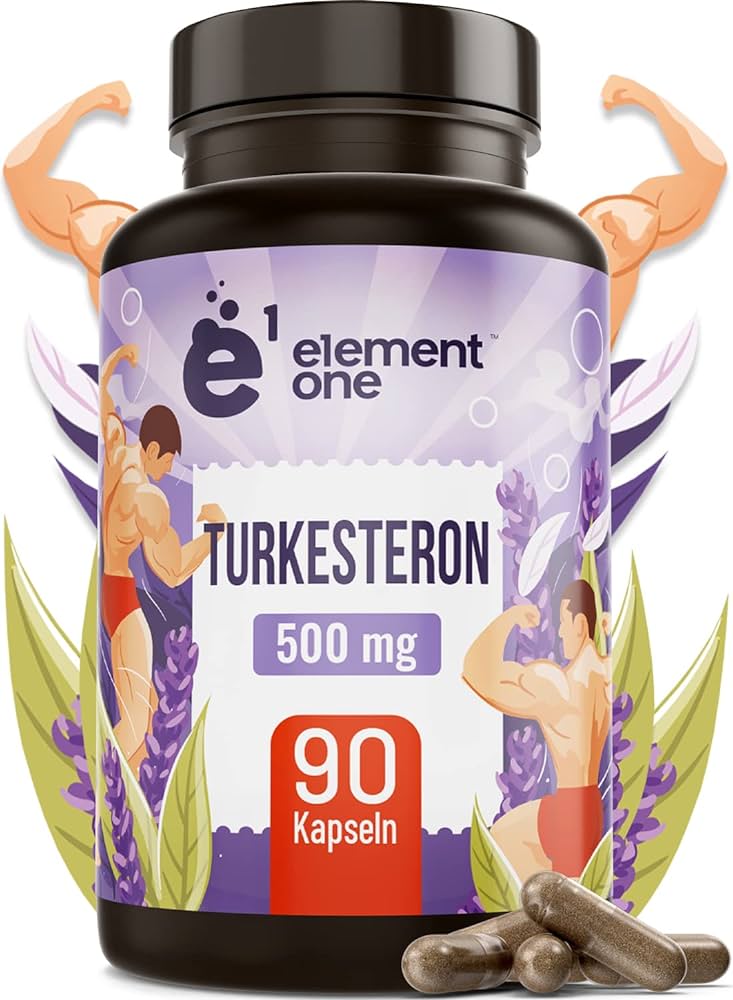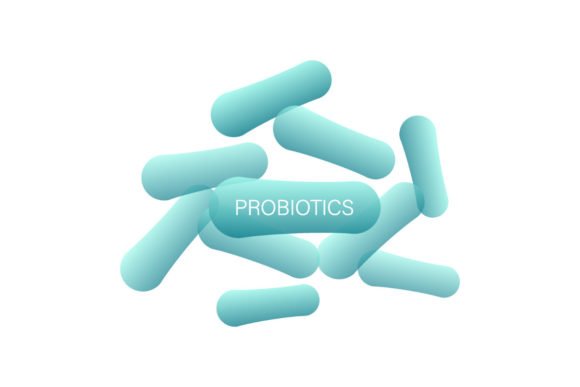Understanding the role of growth hormone (GH) in muscle development is essential for anyone looking to enhance their fitness journey. GH influences various physiological functions, including muscle growth, recovery, and the body’s ability to adapt to physical training. By leveraging the mechanisms of GH and integrating effective training strategies, individuals can optimize their workouts for better muscle gains and improved overall performance.
This article will explore the critical aspects of growth hormone, including its mechanisms in muscle development, optimal rep ranges for hypertrophy, the impact of training intensity, and practical strategies for integrating GH optimization into your workout plan. These insights will provide you with actionable steps to enhance your training and achieve your fitness goals more effectively.
In this article you will find:
Understanding Growth Hormone’s Role in Muscle Development
Growth hormone (GH), also known as somatotropin, is a crucial player in the complex process of muscle development and overall physical fitness. Produced by the pituitary gland, this hormone influences various physiological functions, including growth, metabolism, and tissue repair. Its role in muscle development is particularly significant, as it directly affects muscle growth, recovery, and the body’s ability to adapt to physical training.
The Mechanisms of Growth Hormone in Muscle Development
Growth hormone promotes muscle development through several mechanisms:
- Protein Synthesis: GH enhances protein synthesis, which is essential for muscle repair and growth. It stimulates the uptake of amino acids into muscle cells, facilitating the construction of new muscle tissue.
- Fat Metabolism: GH encourages the breakdown of fat stores, providing energy for muscle activity. This process not only supports muscle function during workouts but also aids in improving body composition by reducing fat mass.
- IGF-1 Production: Growth hormone stimulates the liver to produce insulin-like growth factor 1 (IGF-1), a hormone that plays a pivotal role in muscle growth. IGF-1 further promotes protein synthesis and muscle cell proliferation, enhancing overall muscle mass.
- Cellular Repair: GH aids in the repair of damaged muscle fibers post-exercise, allowing for quicker recovery and adaptation. This is vital for athletes and fitness enthusiasts who engage in intense training.
The Impact of Exercise on Growth Hormone Levels
Exercise is one of the most effective ways to boost growth hormone levels naturally. High-intensity workouts, particularly resistance training and high-intensity interval training (HIIT), have been shown to significantly elevate GH secretion. The following factors influence GH release during exercise:
- Intensity: Higher intensity workouts lead to greater GH release. Engaging in compound movements that recruit multiple muscle groups can maximize this effect.
- Duration: Longer workout sessions may also contribute to increased GH levels, although excessive duration can lead to fatigue and hinder performance.
- Rest Intervals: Shorter rest periods between sets can elevate GH levels further, as they keep the body under stress and promote hormonal responses.
Factors Influencing Growth Hormone Production
Several factors can influence the body’s production of growth hormone, including:
- Age: GH levels naturally decline with age, which can impact muscle mass and recovery. Understanding this can help individuals tailor their training and nutrition to mitigate these effects.
- Sleep: Quality sleep is crucial for optimal GH production. The majority of GH is released during deep sleep, making good sleep hygiene essential for muscle recovery and growth.
- Nutrition: Diet plays a vital role in GH secretion. Consuming a balanced diet rich in protein, healthy fats, and complex carbohydrates can support optimal hormone levels.
To further explore the relationship between growth hormone and muscle development, you can refer to this comprehensive study that delves into the hormonal influences on muscle growth.
Understanding the role of growth hormone in muscle development is critical for anyone looking to enhance their fitness journey. By leveraging the mechanisms of GH and incorporating strategies to boost its production through exercise, sleep, and nutrition, individuals can unlock their potential for muscle growth and overall strength.
Optimal Rep Ranges for Maximum Hypertrophy
When it comes to building muscle mass, understanding the optimal rep range is crucial. Hypertrophy, the increase in muscle size, is influenced by various factors, including the number of repetitions performed during strength training. This section will delve into the science behind rep ranges and how they can be strategically utilized to maximize muscle growth.
The Science of Hypertrophy
Hypertrophy occurs when muscle fibers undergo micro-tears during resistance training. The body repairs these fibers, leading to increased muscle size and strength. The key to stimulating hypertrophy lies in manipulating the rep ranges during workouts. Research indicates that different rep ranges elicit varying physiological responses:
- Low Reps (1-5): Primarily focused on building strength, low rep ranges with heavy weights promote neural adaptations and increase the efficiency of muscle recruitment.
- Moderate Reps (6-12): This range is often considered optimal for hypertrophy. It balances sufficient weight with enough volume to stimulate muscle growth effectively.
- High Reps (13+): Higher rep ranges tend to enhance muscular endurance rather than size. While they can contribute to hypertrophy, the effect may be less pronounced compared to moderate rep ranges.
Finding Your Optimal Rep Range
Determining the best rep range for hypertrophy depends on individual goals, fitness levels, and training styles. Here are some strategies to find your optimal rep range:
- Personal Goals: If your primary goal is to increase muscle size, focusing on the 6-12 rep range is advisable. For those looking to enhance strength, incorporating lower rep ranges can be beneficial.
- Progressive Overload: To continuously stimulate muscle growth, progressively increase the weight lifted within your chosen rep range. This concept is vital for long-term hypertrophy.
- Variety and Periodization: Incorporating a mix of rep ranges in your training program can prevent plateaus and keep workouts engaging. Periodization, or cycling through different rep ranges, can optimize muscle growth over time.
Practical Application of Rep Ranges
To apply these concepts effectively, consider the following workout strategies:
- Compound Movements: Use lower rep ranges (1-5) for heavy lifts like squats and deadlifts to build a solid strength foundation.
- Isolation Exercises: Incorporate moderate rep ranges (6-12) for exercises targeting specific muscle groups, such as bicep curls and tricep extensions, to maximize hypertrophy.
- Endurance Training: Utilize higher rep ranges (13+) for accessory movements or circuit training to improve muscular endurance and overall fitness.
For further insights into rep ranges and their impact on muscle growth, you can explore this research article that discusses resistance training variables and their effects on hypertrophy.
Understanding and implementing the optimal rep ranges for hypertrophy can significantly enhance your muscle-building efforts. By tailoring your training approach to include a variety of rep ranges and focusing on progressive overload, you can achieve your muscle growth goals more effectively.
Recent Research on Training Intensity and Muscle Growth
The relationship between training intensity and muscle growth has been a focal point of research in sports science and exercise physiology. Recent studies have shed light on how varying levels of intensity can impact hypertrophy, recovery, and overall fitness outcomes. This section will explore the latest findings, providing insights into how to optimize training intensity for muscle growth.
The Definition of Training Intensity
Training intensity refers to the level of effort exerted during a workout, often quantified as a percentage of one’s one-repetition maximum (1RM). Higher intensity typically involves lifting heavier weights for fewer repetitions, while lower intensity may consist of lighter weights with higher repetitions. Understanding how to manipulate training intensity is crucial for maximizing muscle growth.
Recent Findings on Intensity and Hypertrophy
Recent research has revealed several key findings regarding the impact of training intensity on muscle hypertrophy:
- Higher Intensity Yields Greater Muscle Activation: Studies indicate that training at higher intensities (75-85% of 1RM) leads to greater muscle fiber recruitment, particularly in type II fibers, which are essential for hypertrophy. This is crucial for those aiming to increase muscle size.
- Volume Matters: While intensity is important, the total volume of training (sets x reps x weight) also plays a significant role in muscle growth. Research suggests that a combination of moderate to high intensity with adequate volume is optimal for hypertrophy.
- Frequency of Training: Recent studies have shown that training muscle groups more frequently (2-3 times per week) at moderate to high intensity can enhance hypertrophic responses compared to less frequent training sessions.
Comparative Studies on Intensity Levels
Comparative studies have examined the effects of different training intensities on muscle growth:
- Low vs. High Intensity: A study published in the Journal of Sports Medicine found that participants who trained with heavier weights (3-5 reps) experienced similar hypertrophy as those training with lighter weights (8-12 reps), provided they reached muscle failure in both cases. This suggests that intensity can be adjusted based on individual preferences and capabilities.
- Impact of Rest Intervals: Research has shown that shorter rest intervals (30-60 seconds) between sets at higher intensities can lead to increased metabolic stress, which is a potent stimulus for muscle growth. However, longer rest periods (2-3 minutes) may be beneficial for strength gains.
Practical Applications of Training Intensity
To apply these insights effectively, consider the following strategies:
- Incorporate Progressive Overload: Gradually increase the weights lifted or the number of repetitions performed to continually challenge your muscles.
- Mix Intensity Levels: Use a combination of low, moderate, and high-intensity workouts throughout your training cycle to maximize hypertrophy and prevent plateaus.
- Monitor Recovery: Pay attention to how your body responds to different intensities. Adequate recovery is essential for muscle repair and growth, especially after high-intensity sessions.
For more detailed insights into how training intensity affects muscle growth, refer to this comprehensive research article that discusses the physiological responses to different training intensities.
By understanding and applying the latest research on training intensity, individuals can tailor their workouts to optimize muscle growth effectively, ensuring that every session contributes to their fitness goals.
Integrating Growth Hormone Strategies into Your Workout Plan
Incorporating growth hormone (GH) strategies into your workout plan can significantly enhance muscle growth, recovery, and overall athletic performance. Understanding how to leverage this powerful hormone can lead to more effective training sessions and better results. This section will provide actionable strategies for integrating growth hormone optimization into your fitness regimen.
Understanding the Timing of Growth Hormone Release
Growth hormone is primarily released in pulses, with the most significant spikes occurring during sleep and after intense physical activity. Timing your workouts and recovery strategies can maximize GH levels:
- Morning Workouts: Engaging in high-intensity workouts in the morning can elevate GH levels, setting a positive tone for the day. Morning exercise has been shown to enhance metabolic rate and promote fat loss.
- Post-Workout Nutrition: Consuming a protein-rich meal or shake immediately after your workout can help stimulate further GH release. Aim for a combination of protein and carbohydrates to optimize recovery.
- Quality Sleep: Prioritize sleep hygiene to ensure you get sufficient deep sleep, as this is when the majority of GH is released. Aim for 7-9 hours of quality sleep each night to support hormonal balance.
Utilizing High-Intensity Interval Training (HIIT)
HIIT is an effective method for boosting growth hormone levels. This training style alternates between short bursts of intense activity and periods of rest or low-intensity exercise:
- Maximize Intensity: Incorporate exercises like sprints, burpees, or kettlebell swings to elevate heart rate and create metabolic stress, which is known to stimulate GH production.
- Short Duration: Keep HIIT sessions between 20-30 minutes to avoid excessive fatigue while still promoting hormonal release.
- Frequent Sessions: Aim for 2-3 HIIT sessions per week to maintain elevated GH levels without overtraining.
Incorporating Resistance Training
Resistance training is another powerful way to increase growth hormone levels. Here’s how to structure your strength workouts effectively:
- Compound Movements: Focus on multi-joint exercises such as squats, deadlifts, and bench presses. These movements engage larger muscle groups and promote greater hormonal responses.
- Progressive Overload: Continuously challenge your muscles by gradually increasing weights or changing rep ranges. This principle is essential for stimulating GH release and muscle growth.
- Short Rest Periods: Limit rest intervals between sets to 30-60 seconds. This approach keeps the muscles under tension and encourages metabolic stress, further promoting GH secretion.
Nutrition Strategies to Support Growth Hormone Levels
Diet plays a crucial role in optimizing growth hormone levels. Consider these nutritional strategies:
- Balanced Macronutrients: Ensure your diet includes a balance of proteins, healthy fats, and complex carbohydrates. Protein is especially important for muscle repair and growth.
- Avoid Sugar Before Bed: High sugar intake before sleep can spike insulin levels, which may inhibit GH production. Opt for a light snack with protein and healthy fats instead.
- Supplements: Certain supplements, such as arginine and glutamine, have been shown to potentially enhance GH release. Consult with a healthcare provider before starting any new supplements.
For more in-depth information on nutrition and growth hormone, you can explore this research article that discusses dietary influences on hormonal responses.
By strategically integrating growth hormone optimization techniques into your workout plan, you can enhance your muscle-building efforts and improve your overall fitness outcomes. Tailor your training and nutrition to harness the power of growth hormone effectively. Growth hormone (GH) plays a vital role in muscle development by enhancing protein synthesis, promoting fat metabolism, and facilitating cellular repair. It is significantly influenced by factors such as exercise intensity, duration, and rest intervals. To maximize GH levels, focus on high-intensity workouts, particularly resistance training and high-intensity interval training (HIIT), while ensuring adequate recovery and nutrition.
To effectively integrate GH strategies into your workout plan, prioritize morning workouts, maintain quality sleep, and consume a protein-rich post-workout meal. Incorporate compound movements in your resistance training and utilize shorter rest periods between sets to stimulate GH release. Additionally, maintain a balanced diet and consider supplements like arginine and glutamine to support hormonal balance.




